Geospatial Hotspot Analysis and Endemicity Trends of Missing and Unrecovered Children in India
- PMID: 37416019
- PMCID: PMC10319941
- DOI: 10.7759/cureus.39955
Geospatial Hotspot Analysis and Endemicity Trends of Missing and Unrecovered Children in India
Abstract
Background: Children constitute a nation's true asset. A country's future relies upon the proper development of its children, which necessitates a supportive environment and sufficient opportunities. Children, under the age of 18 years form a considerable percentage of India's population which imparts a huge responsibility for the nation. Everyday we come across news about a child going missing. The National Crime Record Bureau (NCRB) states that 73,138 children were reported missing overall in 2018. The prevalence increased by 8.9% in 2019, a worrisome situation. The cause behind children going missing is multi-dimensional like poverty, unemployment, loss of livelihood, natural calamities, social conflicts, and migration to urban areas. At present, missing children remain a neglected and non-urgent intervention area for everyone. Only the parents whose children are missing can feel the vacuum and sorrow of the situation. The sociologies of India's missing children merit dimensional and circumstantial examination. The sociological space into which a child goes missing is highly under-researched in India. This study helped in understanding the magnitude of missing cases across India based on existing literature and secondary sources. It also identified the potentially safe and worst areas with regard to missing children. The endemicity helped in identifying the changing trends in each of these areas of interest, which could serve as baseline data for policymakers and law enforcement alike.
Materials and methods: This is a cross-sectional analytical type of study. The data of missing and unrecovered children for the past five years (2021-2017) were obtained from open government data portal (https://data.gov.in) and geospatial hotspot analysis was done using the Getis-Order-G statistics on the same using GeoPandas and PySAL libraries of python. The endemicity of missing cases was studied using hierarchical cluster analysis and self-organizing maps using Python.
Results: For boys, Uttar Pradesh, Rajasthan, and Madhya Pradesh remained consistent hotspots (high risk of missing cases) across all five years of study whereas Karnataka became a hotspot for 2020 and 2021. Among the cold spots (low risk of missing cases), Andaman and Nicobar Islands remained consistent cold spot across all five years of study and has emerged as a safe haven for boys. The missing girls' data reveals that Uttar Pradesh has consistently been the worst state for girls (along with their neighbors) as it possess the risk of girls going missing all through the study period with Chhattisgarh being included from 2019 onwards. Jharkhand, Gujarat, Sikkim, and Andaman and Nicobar Islands have consistently been cold spots across the board and have emerged as areas with low risk for missing girls.
Conclusion: This study helps us in understanding the magnitude of missing cases across India and it also identifies which are potentially safe areas as well as worst areas with regard to missing children. The endemicity also helps us in identifying the changing trends in each of these areas of interest. This will serve as a great resource for policy makers and law enforcement alike.
Keywords: children; endemicity; geospatial analysis; kidnapping; missing; self-organizing maps; unrecovered.
Copyright © 2023, J et al.
Conflict of interest statement
The authors have declared that no competing interests exist.
Figures
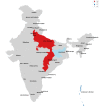
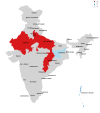
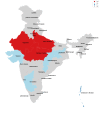
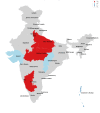


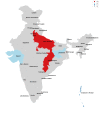
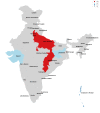
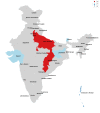
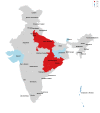
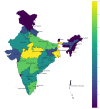
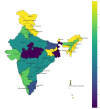
References
-
- Census of India: Office of Registrar General and Census Commissioner, India, Ministry of Home Affairs, Government of India. 2011. https://censusindia.gov.in https://censusindia.gov.in
-
- Sharma P. Report of the NHRC Committee on missing children. 2007. https://nhrc.nic.in/sites/default/files/misc_MCRReport.pdf https://nhrc.nic.in/sites/default/files/misc_MCRReport.pdf
-
- Guidance on the management recording and investigation of missing persons. 2005. http://library.college.police.uk/docs/acpo/Missing-Persons-2005-ACPO-Gui... http://library.college.police.uk/docs/acpo/Missing-Persons-2005-ACPO-Gui...
-
- Report on missing women and children in India. 2019. https://ncrb.gov.in/sites/default/files/missingpage-merged.pdf https://ncrb.gov.in/sites/default/files/missingpage-merged.pdf
LinkOut - more resources
Full Text Sources
Miscellaneous
